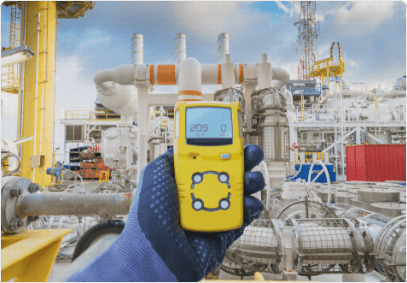A Biased View of Roar Solutions
Wiki Article
About Roar Solutions
Table of ContentsRoar Solutions Fundamentals ExplainedRoar Solutions for BeginnersRoar Solutions Things To Know Before You Get This
In order to secure installments from a possible explosion a method of evaluating and classifying a potentially unsafe location is needed. The function of this is to make certain the proper selection and installation of equipment to ultimately stop an explosion and to guarantee safety and security of life.
(https://www.wattpad.com/user/roarsolutions)
No tools must be mounted where the surface temperature of the devices is higher than the ignition temperature level of the given threat. Below are some usual dirt dangerous and their minimal ignition temperature. Coal Dust 380C 225C Polythene 420C (melts) Methyl Cellulose 420C 320C Starch 460C 435C Flour 490C 340C Sugar 490C 460C Grain Dirt 510C 300C Phenolic Material 530C > 450C Aluminium 590C > 450C PVC 700C > 450C Soot 810C 570C The chance of the hazard being present in a concentration high sufficient to create an ignition will differ from area to location.
In order to identify this threat an installation is divided right into locations of threat relying on the quantity of time the unsafe exists. These locations are referred to as Zones. For gases and vapours and dirts and fibres there are 3 areas. Area 0 Zone 20 An unsafe environment is extremely most likely to be present and might be present for extended periods of time (> 1000 hours annually) or even continuously Area 1 Area 21 A hazardous atmosphere is possible however not likely to be present for extended periods of time (> 10 450 C [842 F] A category of T6 indicates the minimum ignition temperature level is > 85 C [185 F] Unsafe location electric tools possibly developed for use in higher ambient temperatures. This would indicated on the ranking plate e.g. EExe II C T3 Ta + 60C( This means at 60C ambient T3 will not be surpassed) T1 T1, T2, T3, T4, T5, T6 T2 T2, T3, T4, T5, T6 T3 T3, T4, T5, T6 T4 T4, T5, T6 T5 T5, T6 T6 T6 A T Course score of T1 means the maximum surface temperature produced by the tool at 40 C is 450 C. Assuming the linked T Class and Temperature level ranking for the equipment are appropriate for the location, you can constantly use an instrument with an extra strict Division ranking than needed for the location. There isn't a clear response to this question sadly. It actually does depend on the kind of equipment and what repairs need to be lugged out. Devices with specific test procedures that can't be performed in the field in order to achieve/maintain 3rd event score. Need to come back to the factory if it is before the equipment's solution. Area Repair By Authorised Personnel: Difficult screening may not be called for nonetheless specific procedures may need to be complied with in order for the tools to keep its 3rd party ranking. Authorized workers must be utilized to execute the job correctly Repair need to be a like for like substitute. New component need to be considered as a straight replacement needing no special screening of see this here the devices after the repair work is full. Each piece of tools with an unsafe rating must be reviewed individually. These are described at a high level listed below, but also for even more in-depth info, please refer directly to the guidelines.
What Does Roar Solutions Do?
The equipment register is an extensive database of equipment documents that consists of a minimum collection of areas to identify each thing's area, technological specifications, Ex category, age, and environmental information. The ratio of Comprehensive to Shut assessments will certainly be identified by the Devices Risk, which is assessed based on ignition risk (the possibility of a source of ignition versus the possibility of a combustible atmosphere )and the hazardous location category( Zone 0Area 1, or 2). Implementing a robust Risk-Based Evaluation( RBI )strategy is essential for ensuring conformity and safety in taking care of Electrical Devices in Hazardous Locations( EEHA).
Roar Solutions for Dummies

In terms of eruptive risk, a harmful area is a setting in which an explosive atmosphere is present (or may be anticipated to be present) in amounts that require special safety measures for the building, installment and use equipment. Roar Training Solutions. In this post we explore the obstacles dealt with in the workplace, the threat control procedures, and the needed competencies to work securely
It is a consequence of modern-day life that we make, store or handle a variety of gases or fluids that are considered combustible, and a series of dusts that are deemed combustible. These materials can, in certain problems, form explosive atmospheres and these can have major and awful effects. The majority of us know with the fire triangle eliminate any among the 3 components and the fire can not occur, but what does this mean in the context of dangerous locations? When breaking this down right into its simplest terms it is essentially: a combination of a particular amount of release or leakage of a certain material or material, blending with ambient oxygen, and the visibility of a source of ignition.
In the majority of instances, we can do little about the levels of oxygen airborne, yet we can have substantial impact on resources of ignition, as an example electrical devices. Dangerous areas are documented on the dangerous area classification illustration and are determined on-site by the triangular "EX LOVER" indicator. Below, among various other crucial details, zones are divided right into 3 types relying on the danger, the possibility and period that an eruptive ambience will certainly exist; Area 0 or 20 is deemed the most dangerous and Zone 2 or 22 is deemed the least.
Report this wiki page